A parallel in training philosophies…
Monday’s traditionally focus more on Kihon at Contact Kicks Dojo. Under the watchful eye of Sensei Steve Fogarasi, the class runs through drills. Lined up by kyu rank, everyone is attentively listening to the next command, with the resounding reply of OSU! From the class.
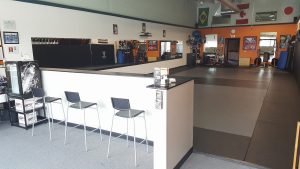
This class the students are a little more attentive to form. Myself included, because the dojo just recently had a new wall of mirrors installed. Suddenly, you are aware of every mistake, posture, etc.
Some people don’t like mirrors, and I believe this is because it does point out flaws you might not be otherwise aware of. Or not, but that’s a whole other issue!
Generally, we learn through auditory and visually from the Sensei. At our school we are lucky enough to have a Sensei who’s technique is near flawless, or very close. We are able to see him perform amazing kicks and stances, while also being able to explain the details and nuances to help us better perform ourselves.
And yes, through our own practice, we can learn kinaesthetically how it feels within our own bodies, but sometimes we are just not aware of certain postures etc. With the mirror in front, you are suddenly acutely aware visually.
Some people don’t like mirrors, but I feel the benefits outweigh the negative:
- You can see the instructor no matter where you are in the room
- You can see what you look like executing a technique
- You can learn to identify and correct your mistakes
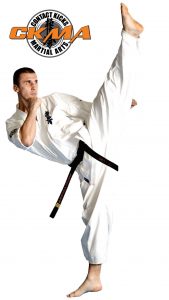
Sensei Steve talks about the importance of proper posture in delivery techniques, especially kicks. Yes, they will look aesthetically better, the “ART” portion of martial arts, but more importantly with proper posture, hand placement, stance, your technique will be delivered against the opponent better, while protecting yourself at the same time.
書道 Shodō
Sensei Steve speaks makes the parallel to a calligrapher. In Japanese calligraphy (書道 shodō), the practitioner never ceases working on the technique. They could be a shihan, or master level, of calligraphy, but he or she never stops being a student. Spending their lifetime working on, correcting and perfecting their form and technique. Karate should be no different. Whether you are in the Kyu ranks, Senpai, Sensei, Shihan, Kyoshi, Hanshi, or even the Meijin, which literally “wise man,” a rarely used title for only the oldest, most dedicated and most skilled of instructors in a system. You never cease working and perfecting your form and technique throughout you life.
 Japanese calligraphy was influenced by, and influenced, Zen thought. For any particular piece of paper, the calligrapher has but only one chance to create with the brush. The brush strokes cannot be corrected, and even a lack of confidence shows up in the work. The calligrapher must concentrate and be fluid in execution. The brush writes a statement about the calligrapher at a moment in time. Through Zen, Japanese calligraphy absorbed a distinct Japanese aesthetic often symbolized by the ensō or circle of enlightenment.
Japanese calligraphy was influenced by, and influenced, Zen thought. For any particular piece of paper, the calligrapher has but only one chance to create with the brush. The brush strokes cannot be corrected, and even a lack of confidence shows up in the work. The calligrapher must concentrate and be fluid in execution. The brush writes a statement about the calligrapher at a moment in time. Through Zen, Japanese calligraphy absorbed a distinct Japanese aesthetic often symbolized by the ensō or circle of enlightenment.

Zen calligraphy is practiced by Buddhist monks and most shodō practitioners. To write Zen calligraphy with mastery, one must clear one’s mind and let the letters flow out of themselves, not practice and make a tremendous effort. This state of mind was called the mushin (無心“no mind state”) by the Japanese philosopher Nishida Kitaro. It is based on the principles of Zen Buddhism, which stresses a connection to the spiritual rather than the physical.
In many Japanese ceremonies, one is to look at a work of shodō or calligraphy, to clear one’s mind. This is considered an essential step in the preparation for a ceremony.
I believe Sensei Fogarasi is correct in the comparison. We must spend our lifetime perfecting and working on our technique and form. If you don’t want to spend so much detail, perhaps martial arts is not the path, and one should just concentrate on physical activities, like the gym.
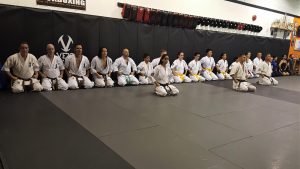 However, Sosai Oyama, the founder of Kyokushin Karate, likened Kyokushin to true Budo, in every sense of the word. Not only in fighting. Emphasis under Sosai was on all aspects of Karate. Kihon, Kata and Kumite. In many dojos around the world, the focus has primarily been on kumite, or fighting. This is not Kyokushin. It is no different than kickboxing. Kyokushin is a form of Budo Karate, and as such, Kihon and Kata should be given the emphasis and practice like that of the shodō artist who concentrates a lifetime on correcting and perfecting their art. They are not a house painter. They are an artist, as the Kyokushin Karate-ka is also an artist. A Martial Artist perfecting the Way.
However, Sosai Oyama, the founder of Kyokushin Karate, likened Kyokushin to true Budo, in every sense of the word. Not only in fighting. Emphasis under Sosai was on all aspects of Karate. Kihon, Kata and Kumite. In many dojos around the world, the focus has primarily been on kumite, or fighting. This is not Kyokushin. It is no different than kickboxing. Kyokushin is a form of Budo Karate, and as such, Kihon and Kata should be given the emphasis and practice like that of the shodō artist who concentrates a lifetime on correcting and perfecting their art. They are not a house painter. They are an artist, as the Kyokushin Karate-ka is also an artist. A Martial Artist perfecting the Way.
OSU!
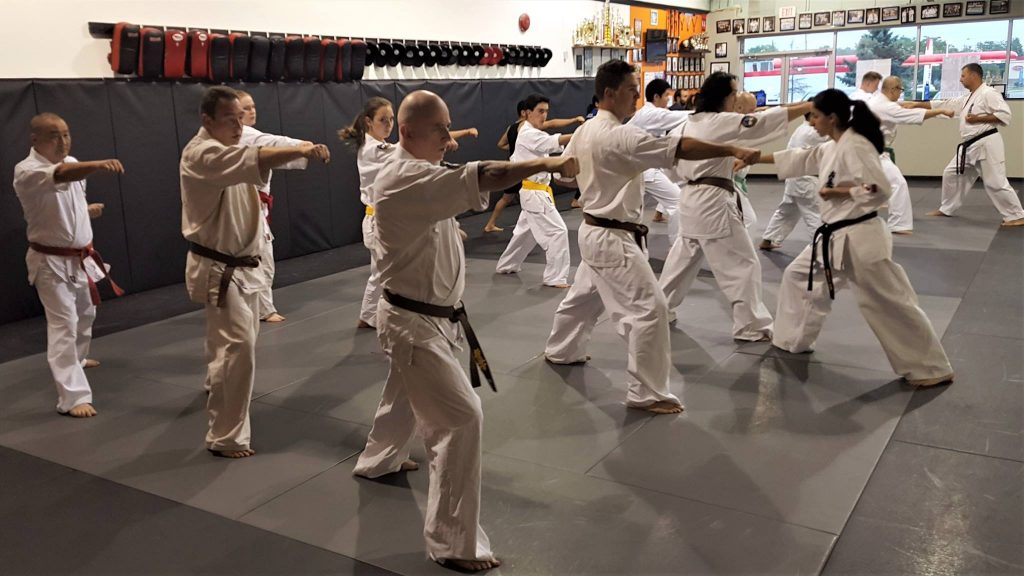
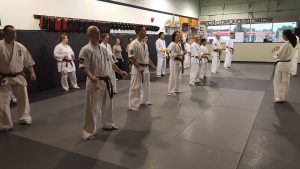
You might find this interesting:
http://cookdingskitchen.blogspot.com/2010/01/zen-combat.html